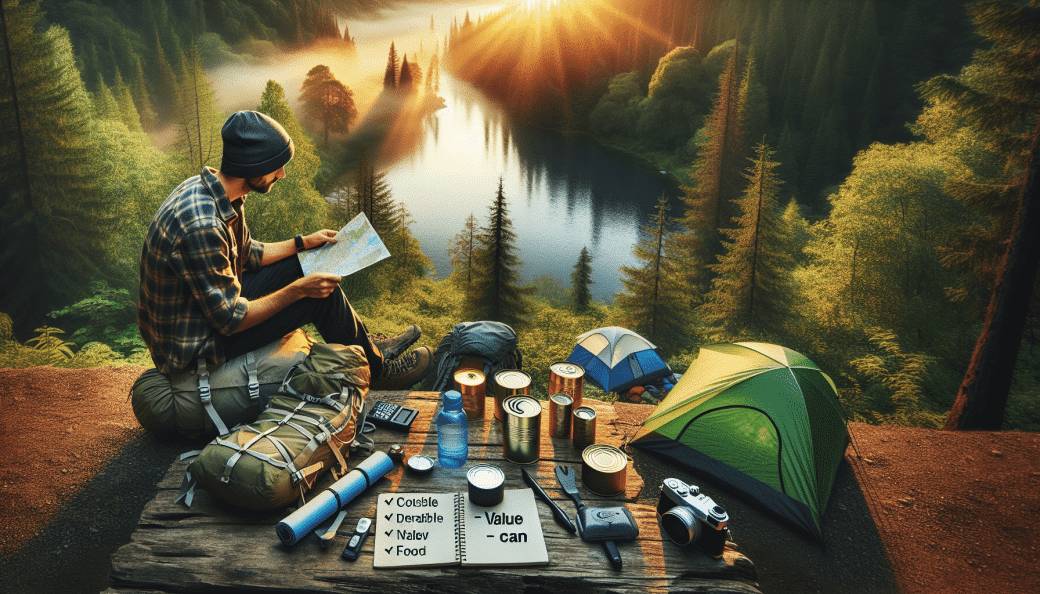If you’re an avid backpacker or planning on hitting the trails for the first time, mastering backpacking safety protocols is essential. Navigating the unpredictable nature of the great outdoors requires knowledge and preparation. In this article, we will guide you through the crucial safety measures to ensure a safe and enjoyable backpacking experience. From packing the right gear to understanding weather conditions and trail etiquette, we’ve got you covered. So grab your backpack and get ready to embark on a journey of adventure and security.

Choosing the Right Equipment
When it comes to backpacking, selecting the proper equipment is essential for a successful and safe outdoor adventure. One of the first items to consider is a suitable backpack. Your backpack will be your trusted companion, carrying all of your necessary gear and supplies. Look for a backpack that fits comfortably on your shoulders and distributes weight evenly across your back. It should have adjustable straps and multiple compartments for organized storage.
Another important piece of equipment is a quality sleeping bag. Your sleeping bag will keep you warm and protected during those chilly nights in the wilderness. Choose a sleeping bag that is appropriate for the climate and weather conditions you will encounter. Consider factors such as temperature ratings, insulation materials, and weight. A lightweight, compact sleeping bag is ideal for backpacking, as it won’t take up much space in your pack.
Investing in quality footwear is crucial for a successful hiking trip. Your feet are your main mode of transportation on the trails, so it’s important to keep them happy and protected. Look for hiking boots or shoes that offer good ankle support, traction, and durability. Make sure they fit properly and are broken in before embarking on your backpacking adventure. Wearing the right footwear can prevent injuries and ensure a comfortable hiking experience.
Lastly, don’t forget to pack essential safety gear. This includes items such as a headlamp or flashlight, a whistle for signaling, a multi-tool or knife, a first aid kit, and a fire starter. These items can be lifesavers in emergency situations and should always be included in your backpacking gear checklist. Safety should be a top priority when venturing into the wilderness, and having the right equipment can make all the difference.
Planning and Preparation
Before heading out on your backpacking trip, thorough planning and preparation are key to a safe and enjoyable experience. Start by researching the hiking trail you plan to explore. Gather information on the trail difficulty, distance, elevation gain, and any potential hazards or challenges that may arise. Knowing what to expect will help you prepare accordingly and make informed decisions along the way.
Checking weather conditions is crucial for a successful backpacking trip. Weather can change rapidly in the wilderness, so it’s important to stay informed and be prepared for various scenarios. Check the forecast for your chosen hiking destination and pack appropriate clothing and gear. Make sure to bring rain gear, extra layers, and sun protection, depending on the weather conditions you may encounter.
Creating a detailed itinerary is an essential part of backpacking preparation. Outline your daily hiking distances, camping locations, water sources, and any notable landmarks or attractions along the way. This will help you stay on track and ensure that you have enough time to reach your desired destinations. Share your itinerary with a trusted friend or family member, so they know your plans and can check in on you if necessary.
Informing others about your plans is crucial for your safety. Before heading into the wilderness, let someone reliable know about your hiking plans. Provide them with a copy of your itinerary, including dates, locations, and expected return date. This way, if you fail to check in or encounter any issues, they can notify the authorities and initiate a search and rescue operation if needed. Communication is key in wilderness safety, so don’t overlook this important step.

Navigating Navigational Tools
Navigational tools are essential for staying on track and finding your way in the wilderness. Learning how to use a map and compass is a fundamental skill for any backpacker. A map will provide you with a visual representation of the hiking trail, topography, and landmarks. A compass will help you determine direction and navigate accurately. Take the time to learn how to read a map and use a compass before embarking on your backpacking adventure.
GPS navigation has become increasingly popular among backpackers due to its convenience and accuracy. Investing in a reliable GPS device or using a smartphone app specifically designed for hiking can significantly enhance your navigation skills. Familiarize yourself with the features and functionality of your chosen GPS device or app, and always carry extra batteries or a portable charger to ensure your device doesn’t run out of power.
Trail markings are another navigational tool that can help guide you along the hiking trail. These markings can vary depending on the location and trail system, but they generally consist of painted blazes, signs, or cairns. Learning to read and understand trail markings will improve your ability to stay on the right path and avoid getting lost. Familiarize yourself with the specific trail markings of your chosen hiking destination.
Mastering Wilderness First Aid
Accidents and injuries can happen even in the most prepared backpackers. That’s why it’s essential to learn basic first aid skills to address common injuries and provide immediate care until medical help is available. Enroll in a wilderness first aid course or take online tutorials to learn how to assess injuries, treat wounds, manage broken bones, and handle other medical emergencies. Proper first aid knowledge can save lives in critical situations.
Creating a well-stocked first aid kit is another crucial aspect of backpacking safety. Your first aid kit should include items such as bandages, antiseptic wipes, adhesive tape, pain relievers, tweezers, and any necessary prescription medications. Customize your kit to meet your specific needs and medical conditions. Regularly check your first aid kit to ensure it is fully stocked and up to date.
More to come…




